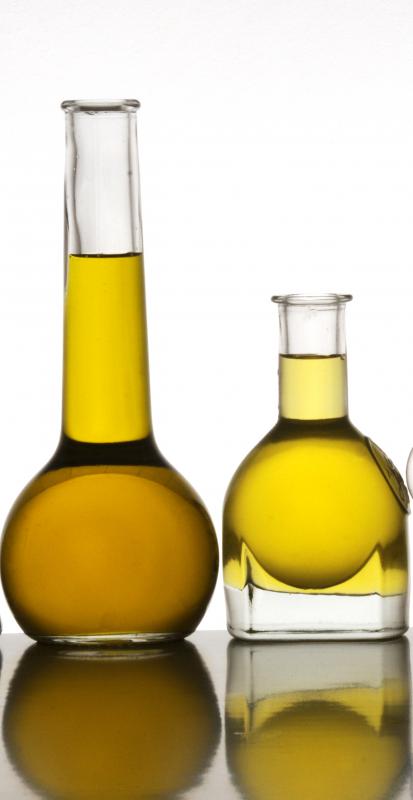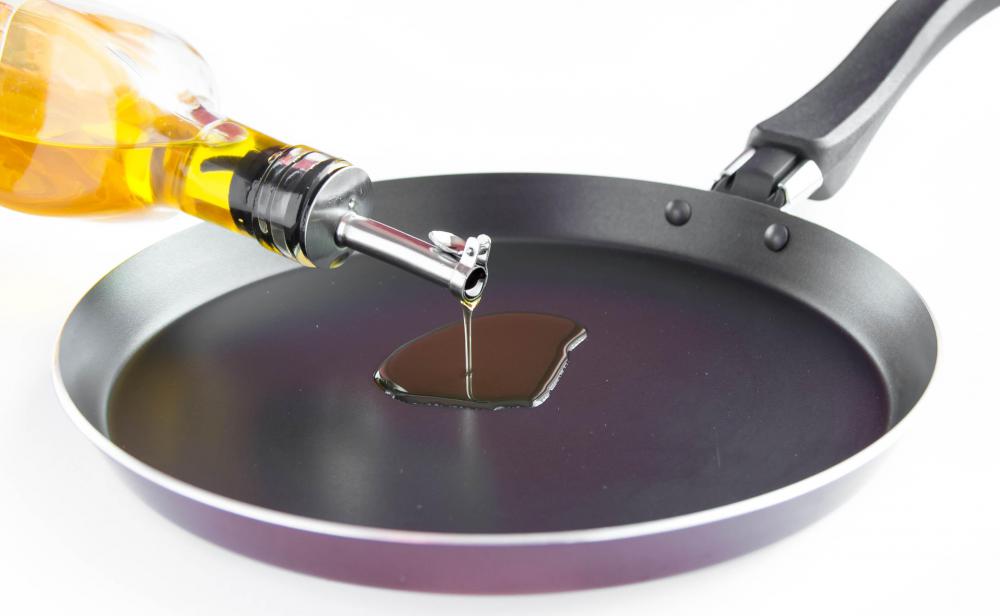At DelightedCooking, we're committed to delivering accurate, trustworthy information. Our expert-authored content is rigorously fact-checked and sourced from credible authorities. Discover how we uphold the highest standards in providing you with reliable knowledge.
How is Olive Oil Made?
Olive oil has been a staple food in the Mediterranean for thousands of years, and some olive trees which are hundreds of years old still bear fruit. The process for making this product is relatively simple, especially as it is practiced in rural areas of Greece and Italy. Commercial olive processing is somewhat more complex, but it still relies on the same basic principle: crushing the olives to release the oil trapped inside. The process can also be used to extract oils from nuts and grains as well.
The olive harvest is the first step in making olive oil. Traditionally, olive trees were beaten by hand to release the fruit, although many processors use commercial machinery today to strip the trees. Once the olives have been picked, the clock starts ticking: they must be brought to an olive mill as soon as possible, or the acidity level will climb too high, ultimately affecting the flavor. After being brought to the mill, the olives are picked through to remove large branches and leaves, and then sent through a cleaner which removes dirt, leaves, and twigs, leaving plain olives behind.

The cleaned olives are run through a mill which turns them into a paste. Traditionally made olive oil still uses a stone grinder to mill olives, although commercial processors have turned to high volume metal grinders which can operate continuously. The resulting paste is subjected to the malaxation process, which means that it is slowly mixed so that droplets of oil begin to adhere to other droplets in the mixture.

After being mixed, the olive paste is put under pressure to extract the liquid oil along with water from the fruit, leaving the paste or pomace behind. The oil is separated from the water, usually in a centrifuge, and bottled while the water is discarded. The resulting olive oil is called virgin, because it is made through a purely mechanical technique. Olive oils with acid levels measured at less than 1% are considered “extra virgin” and usually has a particularly rich and intense flavor. Those with a higher acid level (1-3%) are labeled “virgin.”

Refined olive oil has been chemically treated to reduce the acidity. Sometimes olives which have been allowed to sit too long before processing make a high acid oil, which must be refined. This reduces the value of the oil, so farmers try to avoid this whenever possible. The pomace can be further chemically processed to extract more olive oil which is usually blended with other oils or used for processes like soap making.
AS FEATURED ON:
AS FEATURED ON:
















Discussion Comments
This is really helpful, but does anyone know what an olive is made from chemically?
Because I have to do an assignment on the separation of olive oil from olives for chemistry, and I need to know the 'composition' of the mixture. Any help would be greatly appreciated!
Did you know you can adopt an olive tree from Abruzzo, Italy and have your own olive oil?
I want to manufacture olive oil in india but i want to know can olive trees be grown in india.
Also if i import olives from spain and then make the olive oil in india, will that lead to very high acidity levels in the olive oil?
I want to make a quart of olive oil using raw olives wuich I bought. I have a small press maufactured in Italy. Please tell me the process for doing this? Thank you.
In southern Europe, where the climate is right for olives to grow, years ago, a young man had to plant a certain number of trees before he would get married.
Many of those olive trees that were planted more than a century ago, still produce fruit, and the olive oil extracted is delicious. It is a sense of awe that one has when standing next to those trees that your grandfather, or a great grandfather planted.
Post your comments